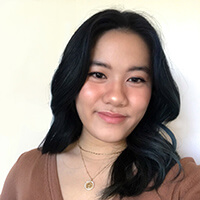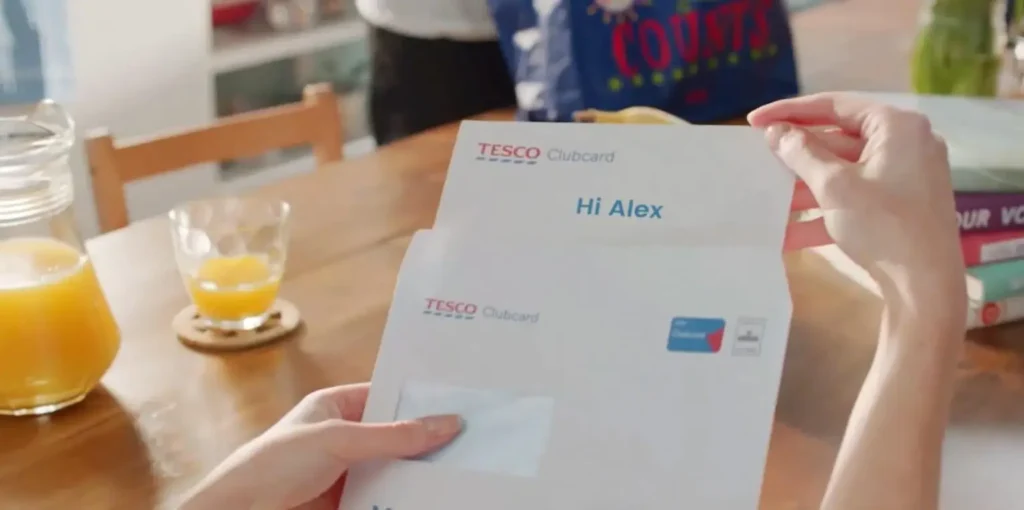Personalization ranks among the top strategies for delivering a stellar customer experience. In fact, 80% of consumers are more likely to do business with a company that offers personalized experiences. By using relevant customer data, brands can create a truly unique customer experience, making customers feel valued and increasing consumer trust.
Done right, personalization has the potential to improve retention and conversions. And this can happen through a range of digital channels, be it video, emails, landing pages, MMS or anywhere else on the connected web.
But while personalization offers massive potential, it can be a double-edged sword. Get it wrong and you risk alienating your audience — or worse, crossing a privacy line. Before diving into what brands get wrong, let’s explore how you should approach personalization.
The Right Way To Do Personalization
Personalization is more than just calling your customers by their name. To be effective, it needs to feel human and organic, less like the person is interacting with a brand and more like they’re interacting with another person.
Consistent Personalization Across Channels
One important facet of personalization is consistency. To create an immersive, personalized experience, it’s essential that your CX is the same across digital platforms. Whether your customer is connecting via an app, email or your website, they’re expecting the same experience.
This expectation is particularly marked with Gen Z. A recent study showed that 66% of Zoomers believe websites will talk to each other to create an integrated personalized experience for users.
The Right Format for Personalization
Just as the right platform is important, so is the right medium. You can personalize text, certainly, but nothing recreates that “human” touch quite like video. American Airlines, for example, was able to lift retention by 5x when they used Next Generation Video.
Both personalized and interactive, their one-of-a-kind campaign was designed to reengage AAdvantage Aviator Red World Elite Mastercard members by giving them a chance to re-explore their benefits. Check out the video yourself below!
If personalizing videos for each customer sounds like a lot of work, it would be — if you had to do it one by one. Sure, a few dozen videos may be something you can handle in-house or with an agency. But if you want to reach hundreds of thousands or millions of customers, you’re going to need some help from modern technology. With a Personalized Video platform, you can leverage automation tools to personalize at scale.
Taking both these tips into account — a multi-channel approach and the right format with data-driven video — brands have seen some amazing results:
- 9x conversion uplift
- 8x higher sales
- 5x increase in social sharing
- 17x user reactivation
Post on
Yet as great as personalization is, you’d be surprised that a lot of brands still aren’t taking advantage of it. Of those who are using it, there are still common personalization mistakes and pitfalls many companies deal with.
In this post, we’ll look at a few examples of brands that got personalization wrong. Hopefully, you’ll catch a few tips on how to raise the bar in your own practice.
Mistake #1: Messing Up the Placeholder
Offender: Jack In a Box
This mistake is common in email marketing. It happens when an autoresponder sends out an email with a raw code or placeholder instead of the subscriber’s name. So instead of receiving an email with “Hi John,” for instance, what you get is “Hi {{firstname}}” or the infamous “Fname.”
Here’s an example of an Fname in a happy birthday email from fast-food chain Jack in the Box. It was noteworthy enough that a customer tweeted it.
Nothing says “I care” quite like a de-personalized birthday wish.
It happens all too often, and it’s not an endearing stumble for a brand to make. The problem with this kind of error in particular is that it gives your subscribers the impression that someone somewhere in your organization is incompetent. And when you’re trying to get people to trust you with their money, that can be an issue.
Maybe it’s less of an issue for a restaurant, like Jack in the Box, as shown above. (After all, you are getting free tacos.) But it could be a bigger deal for, say, a bank. So here’s what you should do to prevent this from happening.
Test and Test Again
We do this with all our Personalized Videos. Quality assurance (QA) is an essential part of digital communications. If it’s an email, send a test email to yourself or your team before blasting it to your list. This way, you can see personalization errors before they reach your customers — and the Twitterverse.
Use a Fallback Phrase
This is a phrase that allows you to address your subscribers with a generic term that fits your brand voice. You’ll need the placeholder term when you don’t have a first name available. Here are some examples:
- Hello, friend (for a casual tone)
- Hi Adventurer! (for a travel company)
- Hey there, Fashionista (for a women’s clothing brand)
- Hi Insider (for a loyalty club or membership site)
Empower Your Audience
Here’s another cool workaround for when you’re working with limited audience data — Interactive Video. Instead of relying on placeholders, you can invite viewers to enter their name or other details directly within the video. Once they do, the video transforms into a custom experience just for them.
Whether they’re visiting your website for the first time or generating a promotional video, interactive features like form fill let viewers tailor the content in real time. It’s a great way to personalize on the fly while also giving your audience a reason to engage.
Curious to see how it works? Customize the video below by clicking on the lightning bolt icon in the video player.
Mistake #2: Sending the Wrong Message
Offender: Amazon
Most (69%) consumers report getting irrelevant brand messages, with nearly half being driven to frustration as their inboxes are bombarded by companies. No doubt, delivering irrelevant messages to people is a quick way to damage your brand reputation.
Sending focused emails based on automation-gone-wrong is the worst. Everybody knows personalization is a thing, but when it goes wrong, it’s jarring. At best, it’s funny. At worst, it’s hurtful or offensive.
Twitter is full of examples of people talking about weird personalization gone wrong, like the time Amazon sent baby registry emails to infertile women. This wasn’t just a minor slip. It was a painful reminder of a deeply personal issue, showing how crucial it is to get personalization right.
That’s the thing about bad personalization. The data collection rarely surprises customers. What matters is how the data is used. If it’s insensitive, you’ll hear about it on social media, like Amazon did. But if it helps provide a better user experience or relevant content, that’s appreciated and pays dividends in customer loyalty. Younger generations are especially eager for personalized content — 81% of Gen Z say they’ll share data with brands if it enables personalization.
Keep that in mind as you’re leveling up your personalization strategy. Customers need personalization efforts that genuinely add value.
Unless they’ve signed up to receive specific content, don’t assume that everyone on your list has the same needs. Instead, create segments within your list and label them properly so you don’t get things mixed up.
Also, you should be careful when you’re dealing with sensitive topics. Personal topics like health, finances and family need extra care. A negative trigger will hurt rather than help the brand-customer relationship.
Mistake #3: Targeting the Wrong Segment
Offender: So, so many brands
Targeting the wrong demographic means sending completely irrelevant messages to people who don’t need them, such as:
- A bakery sale for someone with gluten intolerance
- Pregnancy products for single men
- A new winter clothing line for customers in Hawaii
- Customer satisfaction surveys to brand-new clients
The whole point of personalization is to get the right message in front of the right audience. When you target the wrong segment of customers, you’re wasting the chance to add value to your customers.

Important note: Segmentation isn’t personalization. True personalization is 1:1 communications, but you might combine segmentation and personalization to deliver a tailored experience. For example, you could send a message with your customer’s first name and other individual data, like their contract renewal date, but include cross-selling options relevant for their segment, such as a new customer versus a long-term customer.
Ultimately, the best way to avoid targeting people wrongly is by understanding your audience. Know what they want by studying their behavior and how they interact with your brand. It’s all about gathering and leveraging key data points that enhance your communications, making them relevant and valuable.
Select Health did this well in the Personalized Video below, created to notify customers approaching Medicare eligibility.
Note how the video didn’t just address them by name but included specific details like the exact date their enrollment window opened, the plan options available to them and even helpful advice about what to expect next. It’s the kind of content that truly adds value and resonates with the individual.
Mistake #4: Going Overboard With Personalization
Offender: Spotify, Netflix and others
While getting a personalized experience with a brand can be pleasant and welcoming, taking customer data lightly can be jarring or even offensive. Instead, you want to be sure to create personalized content — without making it creepy.
Brands collect reams of data about us as consumers. We know that, and we’re often OK with it. For example, Spotify tracks everything we listen to and helps us out by suggesting new music and creating custom playlists based on what we like.
Millions of users also love getting their annual Spotify Wrapped, a shareable recap of their listening habits throughout the year. This year-in-review campaign is a hit because it presents data that users are curious about in a fun, engaging way. It essentially becomes a personal celebration, with people eager to see and share their results.
At the same time, being aware that Spotify knows what you’re listening to is one thing, but explicitly seeing how they link song choice to mood (and using it for profit) is another thing.
Sometimes overstepping with personalization could simply mean sharing personal data (even if anonymized) as seen in this tweet from Netflix.
To avoid over-personalizing, a good general guideline is this: If you’re taking first-party data beyond just you and the consumer, you stand a good chance of alienating that customer. Transparency around what you’re collecting the data for is a great way to gain and retain trust.
This can often be a lot to put in a disclaimer, so you might link to a privacy policy with more info. That’s what we do for our blog subscribers.
Getting Personalization Right
Now that you’ve seen some examples of bad personalization, are you ready to do better? Enter Next Gen Video. Gone are the days when video was a massive production reserved for only those with big budgets. Today, video can be highly personalized and actionable, even on a massive scale.
With our platform, you can communicate 1:1 with your customers using data-driven video for everything from bill explainers to upselling and CX.
Contact us today to book a 15-minute call, and we’ll show you how effective personalization can be when it’s done right.







